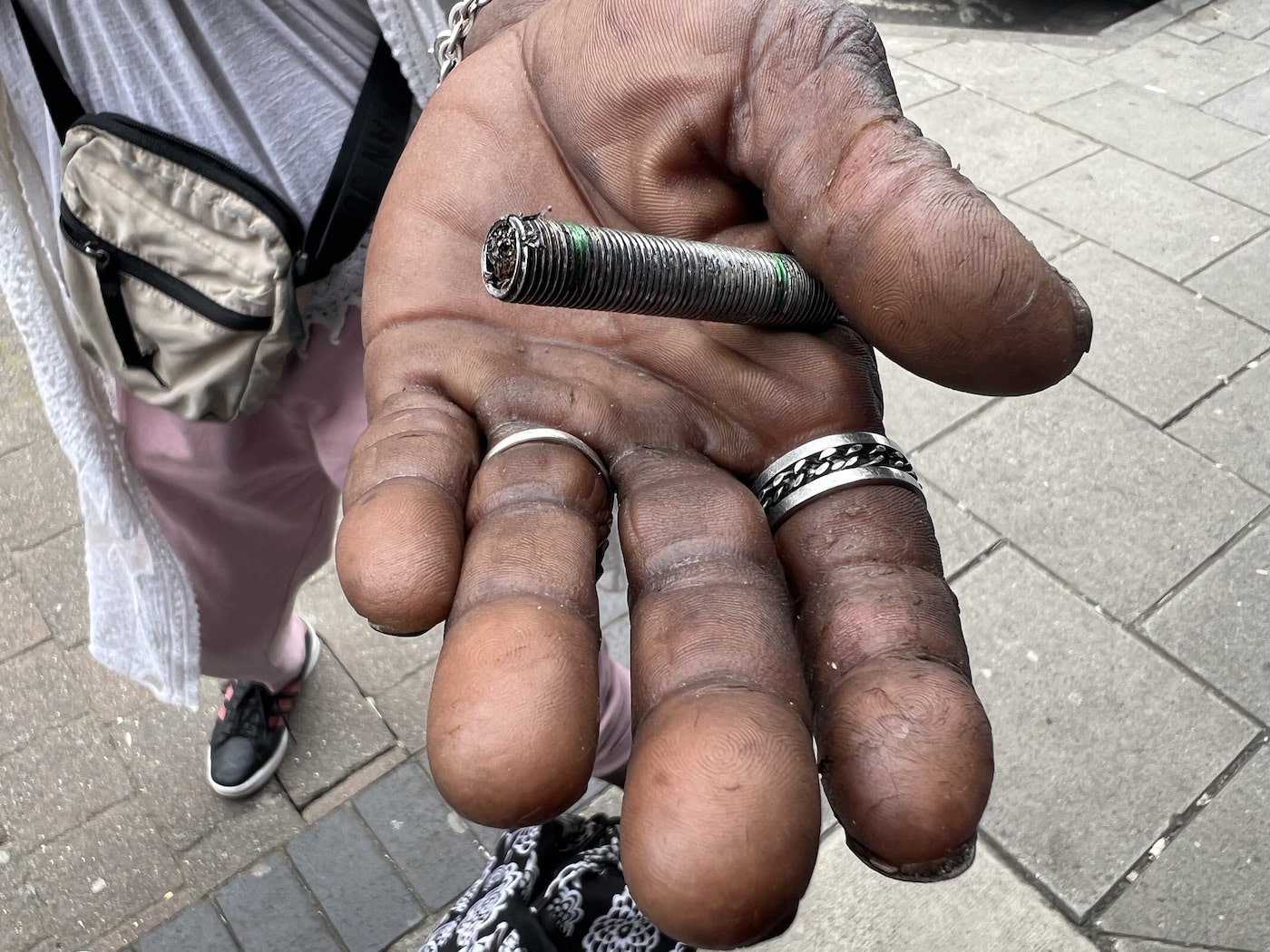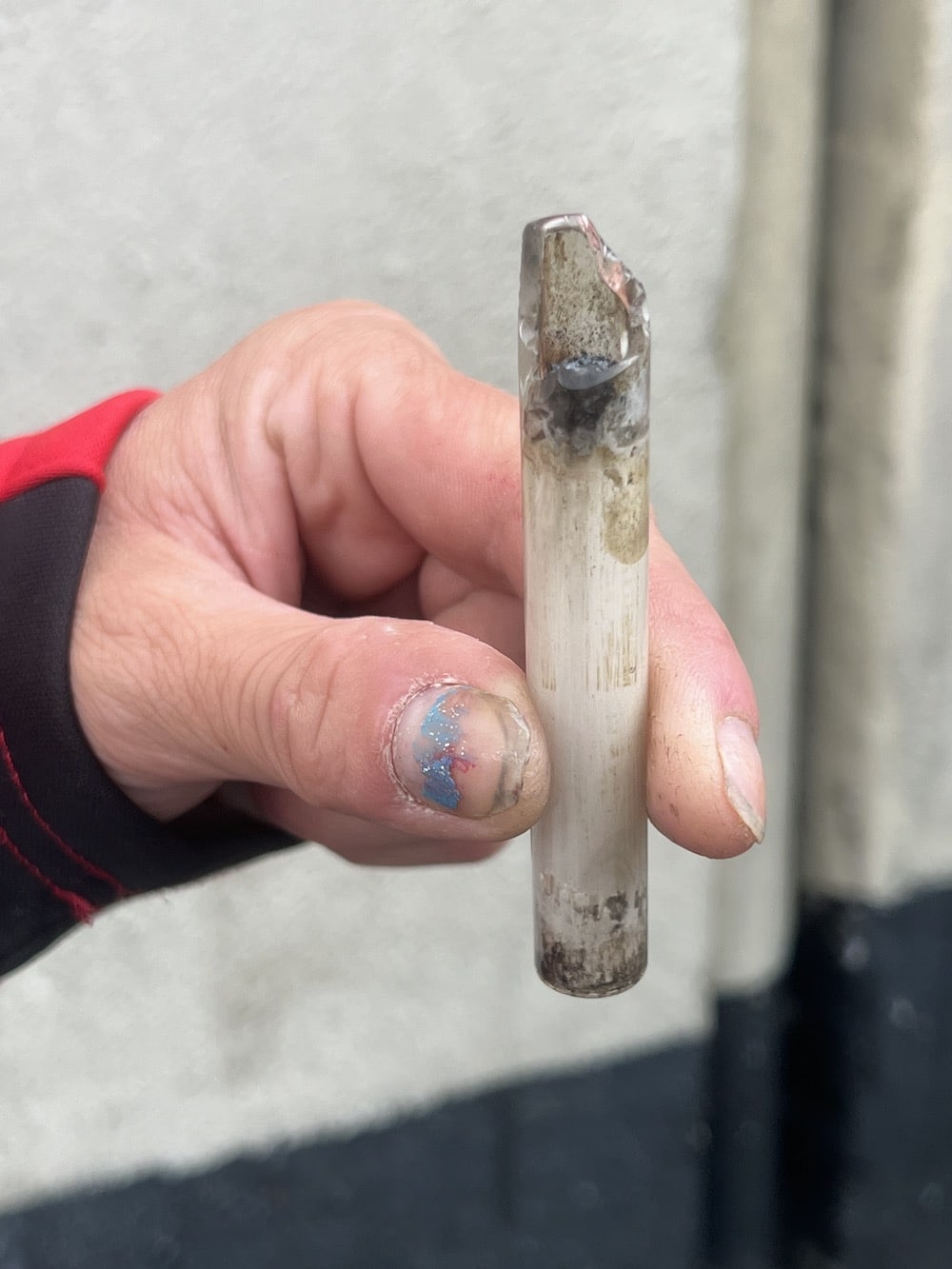Across the globe, people who use stimulants have devised creative, sometimes ingenious, smoking tools. Often used to heat up and inhale crack cocaine or methamphetamine, these homemade implements are regularly made of whatever’s available—particularly in jurisdictions where access to new pipes and stems, such as through safer smoking kit programs, is banned.
These tools speak to the adaptability of the people making them. But though some homemade devices may be relatively safe, harm reductionists say the use of others can carry various added risks—such as inhaling plastic fumes or tiny shards of metal, mouth wounds and disease transmission.
This is particularly worrying considering the worldwide scarcity of pipe distribution programs and other harm reduction interventions that focus on people who smoke drugs. According to Harm Reduction International, only 16 countries offer safer smoking kits, compared to the 92 that host at least one syringe service program.
Mat Southwell, project executive with the European Network of People Who Use Drugs, has seen many homemade smoking implements first-hand in his time working in harm reduction. Over the years, he’s collected images of them from around the world.
“There were some that were somewhat elegant,” he told Filter.
Back in 2015, Southwell and some colleagues traveled to Afghanistan to speak with people who use drugs in the country. While meth production has become more commonplace in Afghanistan in recent years, Southwell recalls it was still early days for the drug at the time. Some people were taking 5-ml glass ampoules (tiny vials), heating them up with a torch and blowing them into meth pipes, complete with the distinctive chamber at the end.

In the United Kingdom, which prohibits the supply of crack pipes, people who smoke the drug have come up with different solutions of their own. According to Southwell, who lives in England, a type of implement known as a nut-and-bolt pipe is somewhat common there. A hollow bolt forms the stem, with a nut screwed onto the top to serve as a mouthpiece. Often, material from metal scouring pads is placed in the pipes to act as a kind of filter.

Other pipes used to smoke stimulants in the country include metal cannabis pipes, which are often extended with tape and various plastic containers in order to cool the smoke prior to inhalation.

Yet another kind of crack pipe previously found in the UK was made from a miniature bottle of Martell-brand cognac. These were chosen because they were made of “heavy-duty” glass, and the bottoms of the bottles had a small indentation, Southwell said. A hole could be punched through the bottom, making a mouthpiece. People would put a kind of filter in the neck of the bottle, along with the crack. Southwell said that these bottles were ultimately removed from the market in favor of plastic. Martell did not respond to Filter’s request for comment.
Mostly there’s “just stigma and prison” for people who use stimulants in Latin America.
Ernesto Cortés is an activist from Costa Rica who has lived and living experience of drug use. He’s the executive director of the Costa Rican Association on Drug Studies and Interventions. Throughout his life and work, he has seen similar tools crafted, and can recall trying some homemade pipes himself. Some of these pipes are made from cans, he said, while others are metal tubes from TV or car antennae.
People in the United States are doing similar things, related Sheila Vakharia, deputy director of the department of research and academic engagement at the Drug Policy Alliance. Many will make their own smoking implements, and/or continue using the same one for far longer than is safe, after it cracks from heat or general wear and tear.
In many jurisdictions around the world, the prevalence of homemade smoking implements and related risks is driven by the illegality of pipes and safer smoking kit programs. Vakharia noted that each US state has its own rules about what is or is not considered “paraphernalia,” and which penalties, if any, apply to handing out or even possessing something like a crack pipe.
According to Cortés, safer-smoking harm reduction interventions are, primarily, illegal and/or unheard of across Latin America, though there have been some examples, such as a program in Mexico. Mostly there’s “just stigma and prison,” he told Filter.
Magdalena Harris, professor of inclusion health sociology at the London School of Hygiene & Tropical Medicine, noted that while safer smoking kit programs are illegal in the UK, people can still purchase pipes with which to smoke crack, as they are often marketed as being ornamental or for cannabis use.
However, Harris is part of an ongoing research project which, with government approval, is handing out pipes. Called the Safe Inhalation Pipe Provision (SIPP) study and based out of three locations across the country, it also surveys people who receive the pipes to measure changes in their use of homemade pipes and respiratory problems, among other things.
The homemade pipes represent “people doing their best within their situations, and the investment they have in their paraphernalia.” They may also pose health risks.
SIPP also involves the pipe providers photographing homemade pipes people use. Some of the photographs in this article came through Southwell’s involvement with the project.
According to Southwell, the homemade pipes represent “people doing their best within their situations, and it also shows the investment they have in their paraphernalia.”
However, they may also pose health risks to the people who use them. In the case of the nut-and-bolt pipes seen in the UK, Southwell said, the steel scouring-pad filters can become brittle after repeatedly being heated, and end up breaking apart. Little pieces can then be carried into the lungs of the person using the pipe, damaging their respiratory system.
A different issue arises with homemade glass pipes like those Southwell saw in Afghanistan: Under heat, they can develop cracks. These cracks can cut people’s lips, which may increase the risk of transmitting bloodborne diseases like hepatitis C when people share pipes.
In general, continuing to use a glass pipe after it starts developing jagged edges carries a risk of wounds to mouths and fingers.

A damaged pipe in the UK
Cortés mentioned a similar risk for the metal tube pipes found in some Latin American countries. With these, the hot metal may cause mouth wounds.
“In the absence of new, safe smoking equipment, people will rake together everyday materials, some of which should not be subjected to flame or high temperatures.”
Vakharia also noted that some homemade pipes include plastic. If heated over and over again, this plastic can release chemicals that are harmful to inhale. Additionally, some people will scrape leftover drug resin out of their pipes to smoke later; if they scrape it off plastic surfaces, they can end up smoking plastic along with the recollected stimulant.
“In the absence of new, safe smoking equipment, people will rake together everyday materials, some of which should not be subjected to flame or high temperatures,” Vakharia told Filter, and long-term, totally preventable health problems may follow.
Vakharia continued that one problem is how the ongoing overdose crisis, along with other factors like the HIV epidemic of the 1980s, has put far more focus on opioids than on commonly smoked stimulants. Yet another issue is that drugs like crack and meth tend to be more stigmatized than many others.
“There is this belief that safer smoking, in and of itself, is an oxymoron—that no form of smoking anything is safe,” she said, “without acknowledging [that] safety is a multi-dimensional, complex concept.”
All of the experts interviewed believe that government restrictions on safer smoking supplies are harmful. Last year in the US, conservative outcry over a historic-but-small federal harm reduction grants program—misleadingly portrayed as “crack pipes for all”—caused rapid backpedaling from the Biden administration, which hastily clarified that “no federal funding will be used … to put pipes in safe smoking kits.”
“Not providing pipes or the services … sends a message to people who use crack that nobody cares about them.”
Cortés said that governments should also provide more funding for drug-user network organizations, plus other services to improve the lives of marginalized people who use drugs, such as housing. Latin America’s US-funded drug war is hampering harm reduction in many countries, he said; ending it would surely help people who smoke stimulants stay healthy.
More work is needed to connect with and engage people who smoke stimulants, Harris said, adding that the SIPP study is doing just that: “What we’re seeing actually has some wonderful stories of engagement.”
Through its connections with people who use stimulants, SIPP is encouraging steps to address health risks, such as people getting tested for HIV or hepatitis C. But more broadly, Harris suggested, one of the biggest benefits of such interventions is that they show an underrepresented community that people are actually interested in their wellbeing.
“I think, to my mind, not providing pipes or the services … sends a message to people who use crack that nobody cares about them,” Harris said.
All photographs courtesy of Mat Southwell
Dr. Vakharia is a member of the board of directors of The Influence Foundation, which operates Filter. The Influence Foundation previously received a restricted grant from the Drug Policy Alliance to support a Drug War Journalism Diversity Fellowship.





Show Comments